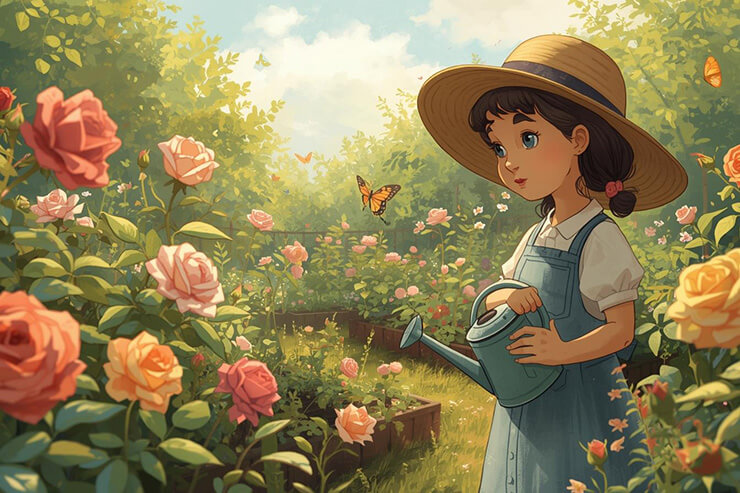Read by Matilda Longbottom

My grandma was a trailblazer. One of the first women in her community to attend university post-women’s liberation, she fearlessly studied botany—an eyebrow-raising choice at the time. Discussions of plant reproduction and propagation were considered rather scandalous for a “proper” young lady. But Grandma? She didn’t care a whit.
My memories of her aren’t about the whispers or societal expectations she defied; they’re about her magical garden. An orchard brimming with fruit trees, pergolas heavy with bougainvillea, a sprawling vegetable patch, and ornamental gardens bursting with color—it was a paradise. Neighbors often stopped to snap photos from the street, awestruck by the vibrant spectacle.
For me, it was a wonderland. I was a pint-sized locust, devouring fresh produce right off the plants—often before they were ripe, much to my stomach’s regret. Picking flowers, making posies, and “helping” Grandma in the garden were the highlights of my childhood. She was endlessly patient, clapping her elegant gardening hat on her head and inviting me to join her.
When I was five, she even gave me a tiny patch of soil to grow flowers from seed. Though my “help” was more hindrance than anything, I learned so much about the magic of planting and growing under her gentle guidance.
Years later, after illness had claimed much of her time and energy, the garden fell into disrepair. By the time I was old enough to care, it was a shadow of its former glory. Only one brave rosebush clung to life amid dry earth and withered shrubs. But the bones of the garden were still there, waiting for someone to listen to their whispers.
That someone was me.
It started with water. The dry earth drank deeply, and soon the miracles began. Seeds, long dormant, burst into life—not just weeds, but flowers and herbs, too. The survivors rallied, putting forth tentative blooms. Encouraged, I began sowing seeds I’d gathered, coaxing the garden back into bloom one handful at a time.
A part-time job at a local garden center funded my obsession. I spent every penny on plants, soaking up knowledge from the horticulturist like a sponge. I worked tirelessly, transforming Grandma’s garden back into a vibrant oasis of color and life.
That passion shaped my future. I went on to study horticulture, embarking on a career that let me grow everything from berries to bulbs. Yet, no matter how far I’ve come, Grandma’s garden remains the root of my love for plants. Every time I see one of her favorite flowers, I feel her presence, her joy, her wisdom.
If there’s one thing Grandma’s Garden taught me, it’s this: gardens bring joy, and they’re easier to revive than you might think. If you’re staring at a patch of dirt or a neglected yard, don’t despair. Start small. Water. Plant. Nurture. The rewards will astonish you. ❖
About the Author: Andrea Durrheim is a horticulturist who spent around 20 years growing tens of thousands of plants of just about every description and writing for magazines. She loves plants and gardening and adores insectivorous plants, but is perfectly capable of getting excited about marigolds or even carrots. Current challenge: not loving cacti to death. Favorite flower? Definitely roses. When she’s not in her country garden, Andrea is behind her computer indulging her other passion: writing.


 Previous
Previous

